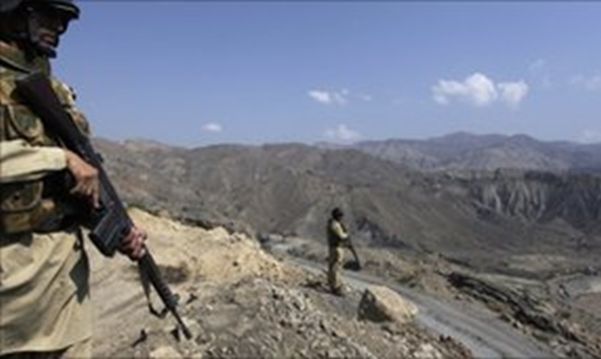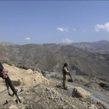
Pakistan’s Bajaur Agency Emerges as New Hub for Islamist Militancy
Publication: Terrorism Monitor Volume: 8 Issue: 32
By:

The Bajaur Tribal Agency in northwest Pakistan continues to be a hotbed of militancy despite being officially declared a “conflict free zone” by the Pakistan Army. Bajaur Agency has been under Taliban control since May 2007. The Pakistani military launched its first anti-Taliban operation in the area in August 2008 and six months later claimed that the area had been cleared of militants. However, many militant organizations remained active in the area and continued their activities both in Afghanistan and Pakistan (see Terrorism Monitor, February 12). As a result, the military then launched a new phase of its anti-Taliban operation earlier this year that was considered to be the first serious government offensive in the area. In the third week of April, Bajaur was declared a “conflict free zone” by the Pakistan Army, and approximately 27,000 displaced families were asked to return to their homes (Dawn, April 20).
Army officials claimed that over 1,800 militants and approximately 200 soldiers were killed in the conflict, though the top leaders of the Bajaur Taliban remained at large, including its chief, Maulana Faqir Mohammad, a former close ally of the late Taliban leader Baitullah Mahsud. After the capture of the strategic village of Damadola (hometown of Maulana Faqir Mohammad), local military commander Major General Tariq Khan declared that the entire Bajaur Agency had been cleared of militants up to the Afghan border, adding that 25% of the Taliban had fled to Afghanistan, 15% to Swat and other areas and the remainder had either been killed or captured (The News, April 21). General Ashfaq Parvez Kayani, chief-of-staff of the Pakistan Army, visited Bajaur Agency in April and acclaimed the sacrifices of the tribal people against the Taliban. This was the second time within a one year period that Bajaur was declared secure (The News, April 21).
Subsequent events, however, belied these claims and have clearly shown that Bajaur is still infested with Taliban. In the first week of May, Pakistani troops killed 18 militants in a skirmish near Khar, the capital of Bajaur (Dawn, May 3). In mid-June, the Taliban distributed a Pashto language letter in the Mamond and Khar tehsils of Bajaur, warning the security forces and other officials to mend their ways or be ready to face the consequences. The letter added that the Tehrik-i-Taliban Pakistan (TTP) would continue its fight in Bajaur against the United States and its allies (Daily Times, June 16; The News, June 16). In the last week of June, four soldiers were killed when militants attacked an army patrol in the Kherkai area of Mamond tehsil (county). A few days later, the power supply to the entire agency was interrupted when militants blew up two towers of the main transmission line and left a note asking the authorities not to repair the damage (Dawn, June 29). In the first week of July, seven persons were injured when the houses of two local journalists in Bhai Cheena, near Khar, were attacked with hand grenades (The News, July 8). A week later, a group of suspected Taliban bombed a girls’ school near Khar, raising the number of schools destroyed in Bajaur by the Taliban to 93. The same day, another group of Taliban fired two rockets onto Khar from an unknown direction. The rocket fire did not result in any physical damage but frightened the already terrified populace (The News July13).
However, there have also been successes in counterterrorism operations in the agency. On July 19, there were reports of 21 militants laying down arms during a jirga of Mamond tribal elders (The News, July 19). There were reports of the death of local Taliban commander Irshad Khan and his aide on July 22 when a bomb they were constructing in the Taliban commander’s home exploded, seriously injuring a number of Khan’s family members (Dawn [Karachi], July 22, Daily Times, July 23). Several days later, Dr. Ismail, chief of the Bajaur chapter of the Tanzim Nifaz Shariat-e-Muhammadi (TNSM), surrendered, along with six associates, to the security forces and denounced terrorism at a grand tribal jirga of the Badan tribe in Khar. The event was attended by Bajaur Scouts commander Colonel Nauman Saeed, who praised the efforts of tribal elders in restoring order in the community (Daily Times, July 24; The News, July 25). Some of these elders have been targeted by militants who are eager to remove their influence – on July 23, three tribal elders, one of them the head of a local peace committee, were killed and two others injured in a bomb explosion in the Mamond tehsil of Bajaur Agency (Daily Times [Lahore] July 24).
The abovementioned incidents clearly show that declaring Bajaur “conflict free” has not ensured peace in Bajaur. One reason for this may be the inability of the civilian administration to rebuild and revive the economy and infrastructure of Bajaur. Another problem has arisen from the Taliban practice of buying off members of local anti-Taliban militias. The governor of Afghanistan’s Kunar province, Fazlullah Wahidi, has also been blamed for the continued violence in Bajaur, as he is alleged to have provided sanctuary and support to the fleeing militants (Express Tribune [Lahore], July 12). As one analyst put it, “The Pakistan Army has captured Damadola, Sewai and some other areas of Mamond, but has left the Taliban relatively untouched” (Express Tribune, April 23, 2010).
The continued violence in Bajaur has a significant impact on areas of the nearby Khyber-Pakhtunkhwa Province and other Pakistani tribal areas. Bajaur is adjacent to Dir, Chitral and Mohmand Agencies and very close to Swat and Peshawar. It can thus provide a staging ground for attacks in all of these areas. The July 9 suicide bombing of the office of the assistant political agent in Mohmand Agency, which resulted in the death of over 100 people gathered for an anti-Taliban jirga, is also tied to the Bajaur Taliban (Express Tribune, July 12; Dawn, July 10). Local media have also suggested that the northern mountains of Bajaur and Chitral may provide a refuge for Osama bin Laden (The Nation [Lahore] June 20). Clearly, military operations conducted so far have yet to secure the Bajaur Tribal Agency.





